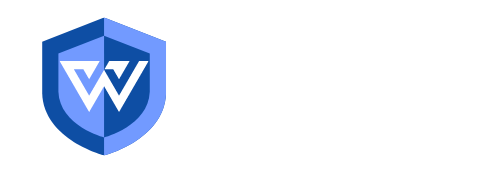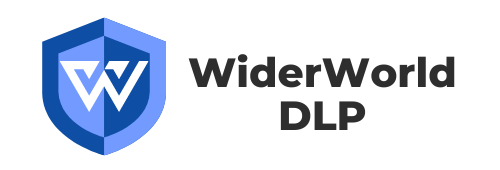
Selecting the Right DLP For your Company
There are different types of DLP solutions available, such as network-based and endpoint-based DLP. Network-based DLP solutions monitor network traffic and data flows to prevent data breaches, while endpoint-based DLP solutions are installed on individual devices to monitor data usage and movement. It’s important to note that there is no one-size-fits-all DLP solution, and choosing the right solution depends on various factors, such as the type of data you need to protect, the size of your organization, and the industry you operate in. If you’re unsure which DLP solution is best for your organization, contact us to discuss your data protection needs and evaluate our solution’s effectiveness in meeting those needs.

Mobile Device Management (MDM), Mobile Application Management (MAM) are critical components of Data Loss Prevention (DLP) solutions of Endpoint Management in today’s mobile-first business environment. These solutions allow organizations to manage user access, simplify app and device management, and protect access and data on both organization-owned and personal devices used by employees. These solutions help organizations reduce the risk of data breaches and maintain a secure and productive working environment.
Benefits:
- Improved data security: One of the significant benefits of using endpoint management solutions is improved data security. These solutions provide granular control over device and app usage, allowing organizations to enforce security policies and prevent unauthorized access or data sharing. By implementing MDM, MAM, and endpoint management solutions, organizations can protect sensitive data from loss, theft, or leakage, and ensure compliance with industry regulations.
- Simplified device management: Another advantage of using MDM/MAM is simplified device management. These solutions provide organizations with a centralized platform to manage and monitor mobile devices, applications, and user access.
Limitations:
- Limit on protected file type: Some Mobile Device / Application Management solutions may have limitations on the types of files that can be protected, such as only being applicable to Office 365 data and office files. This can limit the effectiveness of the solution for protecting other types of sensitive data and data disguised in other file extensions.
- Can not control new documents: Most Mobile Device / Application Management solutions may not be able to control new documents that are created outside of the managed application or environment. This can create gaps in security that could be exploited by malicious actors.
- No protection to print-out, print screen or snapshot with other devices: Most Mobile Device / Application Management solutions may not be able to protect against printing, screen capturing, or taking snapshots of sensitive data using other devices. This can make it challenging to prevent unauthorized access or data leakage.
- Lack of approval process: Some Mobile Device / Application Management solutions may lack an approval process for accessing sensitive data, such as requiring a second-factor authentication or approval from a supervisor. This can increase the risk of data breaches or unauthorized access, especially when employees have access to highly sensitive data.
Check out how protected zone in WiderWorld DLP Solution can help >>

Information Rights Management (IRM) and Active Directory Rights Management Services (AD RMS) provide a set of tools for protecting sensitive data. They are designed to help organizations protect their sensitive data by providing granular control over access and usage rights, ensuring that only authorized users have access to sensitive information.
Benefits:
- Granular control over data access and usage: IRM / AD RMS provides organizations with granular control over data access and usage, allowing them to define specific usage rights and permissions for sensitive data. This means that only authorized users can access and use sensitive data, reducing the risk of data loss or leakage. Additionally, IRM / AD RMS allows organizations to monitor and audit access to sensitive data, providing a higher level of security and compliance.
- Protection of sensitive data outside of the organization: The ability of IRM / AD RMS to protect sensitive data even when it is shared outside of the organization. By applying rights management policies to sensitive documents, organizations can ensure that data is protected no matter where it travels. This is particularly useful for organizations that work with third-party vendors or partners who require access to sensitive data.
Limitations:
- Hard to share files with external users: While it is possible, Most IRM and AD RMS based DLP can be difficult to share files with external users. Especially external parties who do not have an Active Directory account. This requires the creation of an AD account for the recipient, which can be time-consuming and cumbersome.
- Limited control over file sharing: Most IRM / AD RMS allows document creators to define policies for how their documents can be accessed and used, but it cannot prevent owners from sharing the file outside of the RMS environment. This can create security gaps that could be exploited by malicious actors.
- Difficulty maintaining policies: IRM / AD RMS can be challenging to maintain when different creators define their own policies. This can create inconsistencies in policy enforcement and make it difficult to ensure compliance with industry regulations.
- No protection against printing or screen capturing: One of the frequent complaints is that IRM / AD RMS cannot protect against printing, screen capturing, or taking snapshots of sensitive data using other devices. This can make it challenging to prevent unauthorized access or data leakage.
- Limited protection for certain file types: RMS may not be able to protect all file types, such as videos. This can limit its effectiveness for protecting certain types of sensitive data.
Check out how protected zone in WiderWorld DLP Solution can help >>

Transparent Data Encryption (TDE) is a technology used to encrypt data at rest, which means that it is encrypted while stored on disk or other storage media. The purpose of TDE is to eliminate the negative effects of data theft or accidental sharing of sensitive data by making it unreadable to unauthorized users. By encrypting data at rest, TDE provides a high level of security for sensitive data, which is suitable for organizations that handle large amounts of confidential information.
Benefits:
- Protection of sensitive data at rest: TDE provides an additional layer of security for sensitive data, ensuring that it cannot be accessed or read by unauthorized users if the storage media is lost or stolen.
- Transparent operation: TDE operates transparently to applications and users, which means that it does not require any changes to the application or user interface. This makes it easy to implement and manage, as it does not require any additional user training or application modifications.
Limitations:
- High performance hit: TDE can have a high performance hit, as files need to be encrypted and decrypted whenever they are operated on. This can impact system performance and slow down file access times.
- Lack of flexibility: When a specific file type is protected, all files of that type are encrypted. This can limit the flexibility of the solution and make it difficult to apply different levels of protection to specific file
- Integration challenges: TDE can be challenging to integrate with other systems, as the files are encrypted. This can complicate data sharing and collaboration, especially with external partners or vendors.
- Limited protection: TDE is primarily focused on protecting data in transit and in storage, but it may not protect data in use. This can create security gaps that could be exploited by malicious actors.
- Difficulty exiting the solution: TDE can be challenging to exit if a business decides to change their data protection approach. This is because IT will need to decrypt all the protected files, which can be time-consuming and resource-intensive.
- Higher risk of data loss: Repetitive encryption and decryption can increase the risk of data loss due to file corruption. It might shorten the hard drive’s lifespan with the extra I/O, especially for nowadays’ more common SSD drive.
Check out how protected zone in WiderWorld DLP Solution can help >>

Device and Channel Control is a security feature that allows organizations to control the use of external devices and channels, such as USB drives, web mail, instant messaging, and cloud drives. The aim of this feature is to prevent sensitive data from being transferred to these external devices and channels. By controlling the use of these devices and channels, organizations can reduce the risk of data loss or theft, ensuring that sensitive data remains secure.
Benefits:
- Prevention of data leakage: Device and Channel Control provides organizations with the ability to prevent sensitive data from being transferred to external devices and channels without permission. This reduces the risk of data leakage and ensures that sensitive data remains secure.
- Enhanced security: By controlling the use of external devices and channels, Device and Channel Control helps organizations enhance their security posture. This feature allows organizations to restrict access to sensitive data, ensuring that only authorized users can access and transfer sensitive information.
Limitations:
- Use multiple products: Device and Channel Control may require the use of multiple products or solutions to effectively control the use of external devices and channels. This can create complexity and increase the cost of implementing the solution.
Inability to protect against lost devices: Device and Channel Control cannot protect against data leakage if someone loses their device, as the data is no longer under the control of the organization.
- High user impact: Device and Channel Control can have a high user impact, as many activities may be forbidden, such as communicating with clients via certain channels like WhatsApp. This can impact productivity and user satisfaction.
- Difficulty in setting up and including all channels: It can be challenging for administrators to set up and ensure that all channels are included in the policy, especially as new channels and applications emerge.
- Difficulty in maintenance: Device and Channel Control policies either need to keep up with the ever-expanding web services and applications, or have it set to be very restrictive, which can make balancing maintenance and user productivity very challenging.
- Lack of protection against print-out or copy & paste: Device and Channel Control may not be able to prevent unauthorized printing or copying and pasting of sensitive content, which can create security gaps that could be exploited by malicious actors.
Check out how protected zone in WiderWorld DLP Solution can help >>

Hard disk encryption is a security measure that protects data on a workstation’s hard disk by scrambling it and making it inaccessible without a decryption key. This technology is designed to prevent unauthorized access to sensitive information in case of theft or loss of the device. Encrypting the hard disk renders the data useless without the appropriate key, which protects sensitive information on a device.
Benefits:
Protects sensitive data: Encrypting data on a hard disk prevents unauthorized access, safeguarding sensitive information from breaches, loss, or theft.
Ensures compliance: Hard disk encryption helps companies comply with regulatory requirements for data security, reducing legal consequences associated with data breaches and demonstrating their commitment to data protection.
Limitations:
Performance impact: Hard disk encryption can potentially have a high performance impact on users, especially when set for file-based encryption, which can slow down file access and processing.
Limited control over new documents: Once the hard disk is encrypted, any new documents created will also be encrypted, which can limit the ability to control access to new documents.
No protection against print-outs, print screens, or snapshots: Hard disk encryption does not protect against users taking screenshots, printouts, or screenshots of sensitive information using other devices.
Limited control over copy and paste: Hard disk encryption does not provide control over copying and pasting sensitive content, which can be a concern in environments where data leakage via channels such as cloud drives or instant messaging apps is a risk.
Lack of file and print logs: Hard disk encryption typically lacks file and print logs, which can make monitoring and analysis of data access and usage difficult, limiting the ability to audit and investigate incidents.
Check out how protected zone in WiderWorld DLP Solution can help >>
![]()
Rule-based and classification-based Data Loss Prevention (DLP) is a security measure that aims to protect an organization’s sensitive data by identifying, categorizing, and controlling access to data through automatic, manual, or hybrid classification. By analyzing the content of files to determine the level of sensitivity, DLP applies appropriate controls to limit access to the data, preventing data leakage and reducing the risk of data breaches.
Benefits:
Customizable policies: DLP allows for customizable policies that can be tailored to the organization’s unique data protection requirements, providing more effective protection of sensitive data.
Real-time monitoring and alerts: DLP provides real-time monitoring and alerts for potential threats to sensitive data, allowing for quick response and prevention of data breaches. It can also provide valuable insights into data usage patterns for the optimization of security measures.
Limitations:
Performance impact: Rule-based / Classification DLP can have a high performance impact on systems as it scans information in real-time, potentially slowing down file access and processing.
Challenging policy setup: Defining policy for Rule-based / Classification DLP can be difficult, especially for sensitive documents that come in all different shapes and forms, making it challenging to define patterns.
Maintenance challenges: Rule-based / Classification DLP can be challenging to maintain for the same reason, as it requires ongoing updates and adjustments to stay effective. And the responsibilities lie on the IT team to have the right rules set up perfectly, which is human talent intensive and might be beyond some IT teams’ capability in some organizations.
False positives and user resistance: Rule-based / Classification DLP rules can be too strict or not accurately scan or understand the content, leading to false positives. This can lead to employee resistance, as they perceive DLP as overly restrictive or intrusive in their work processes.
- High switching barriers: Some Rule-based / Classification DLP Adopting a hard-disk encryption module can create a dependency on the DLP approach, making it difficult to exit if the business decides to change its approach to data protection.
Check out how protected zone in WiderWorld DLP Solution can help >>
WiderWorld DLP that's Powerful, Practical, and Painless.
Protected Zone
Ease of Policy Maintenance
"Data Leak From Screen" Protection
Minimal Server Encryption
// BOOK A DEMO

